瞻博网络 Mist WAN 保证概述
熟悉瞻博网络 Mist™ WAN 保证的用途、功能和优势。
WAN 边缘是企业网络与外部世界的分界点。此边界是重要的安全和故障排除热点。WAN 边缘可以成为企业网络与外部世界之间的简单边界。不过,WAN 边缘也可以是由 Mist AI™ 驱动的瞻博网络® SD-WAN 设备。选项包括瞻博网络® SRX 系列防火墙、瞻博网络® Session Smart™ 路由器或瞻博网络安全边缘等云解决方案。
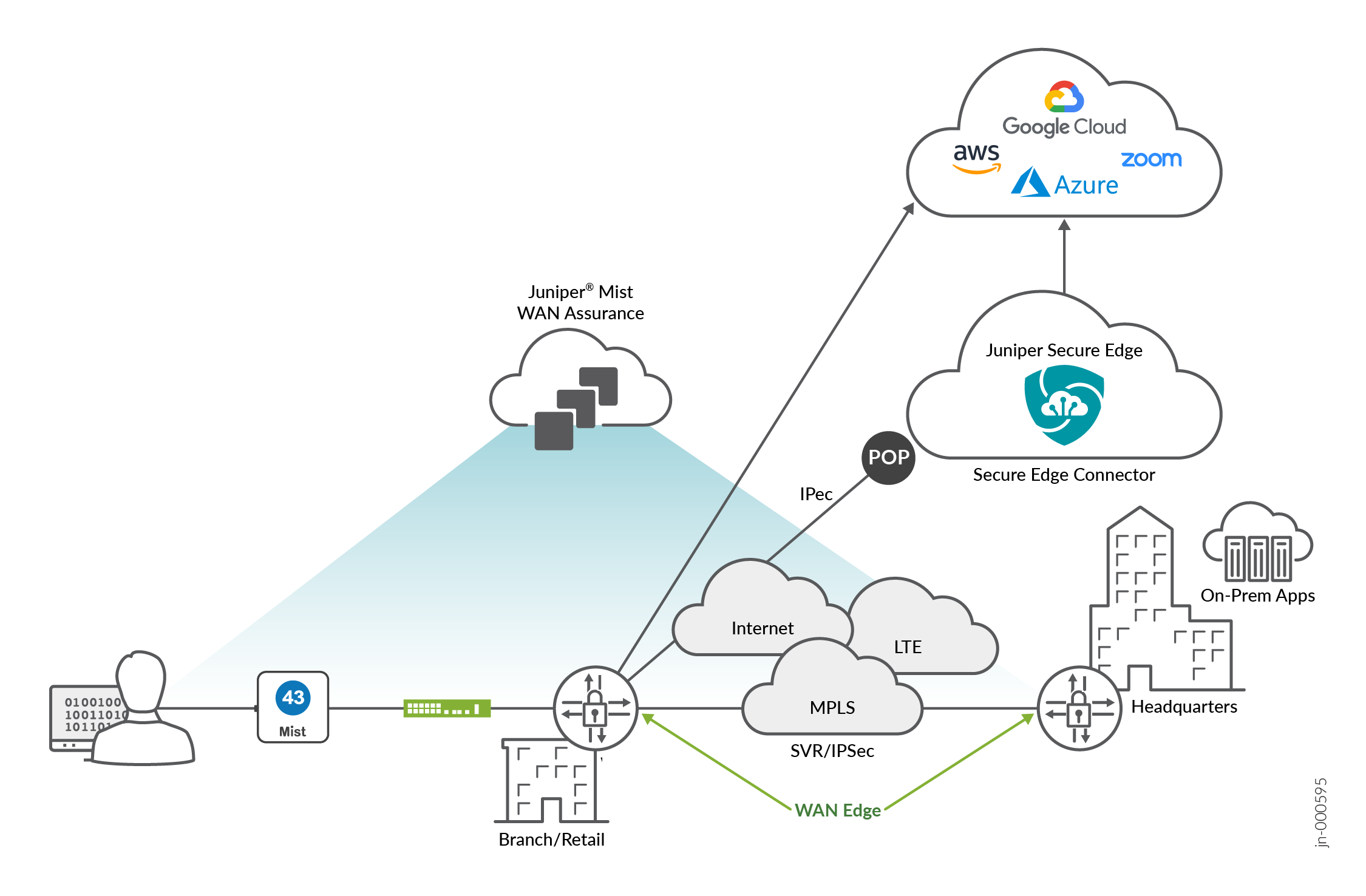
WAN 边缘借助瞻博网络的人工智能驱动型 SD-WAN 解决方案进行转型,并充当您的集中式策略实施点 (PEP)。结合瞻博网络 Mist WAN 保证云服务,瞻博网络 SD-WAN 解决了许多传统 SD-WAN 解决方案在安全、监控和故障排除方面面临的挑战。通过将 瞻博网络 Mist Wired Assurance、瞻博网络 Mist Wireless Assurance 和现在的 瞻博网络 Mist WAN 保证 集成,在整个网络中实现部署、监控和故障排除。瞻博网络 Mist WAN 保证将分支机构与跨 SD-WAN 的瞻博网络® Session Smart™ 路由器或瞻博网络® SRX 系列防火墙安全连接。
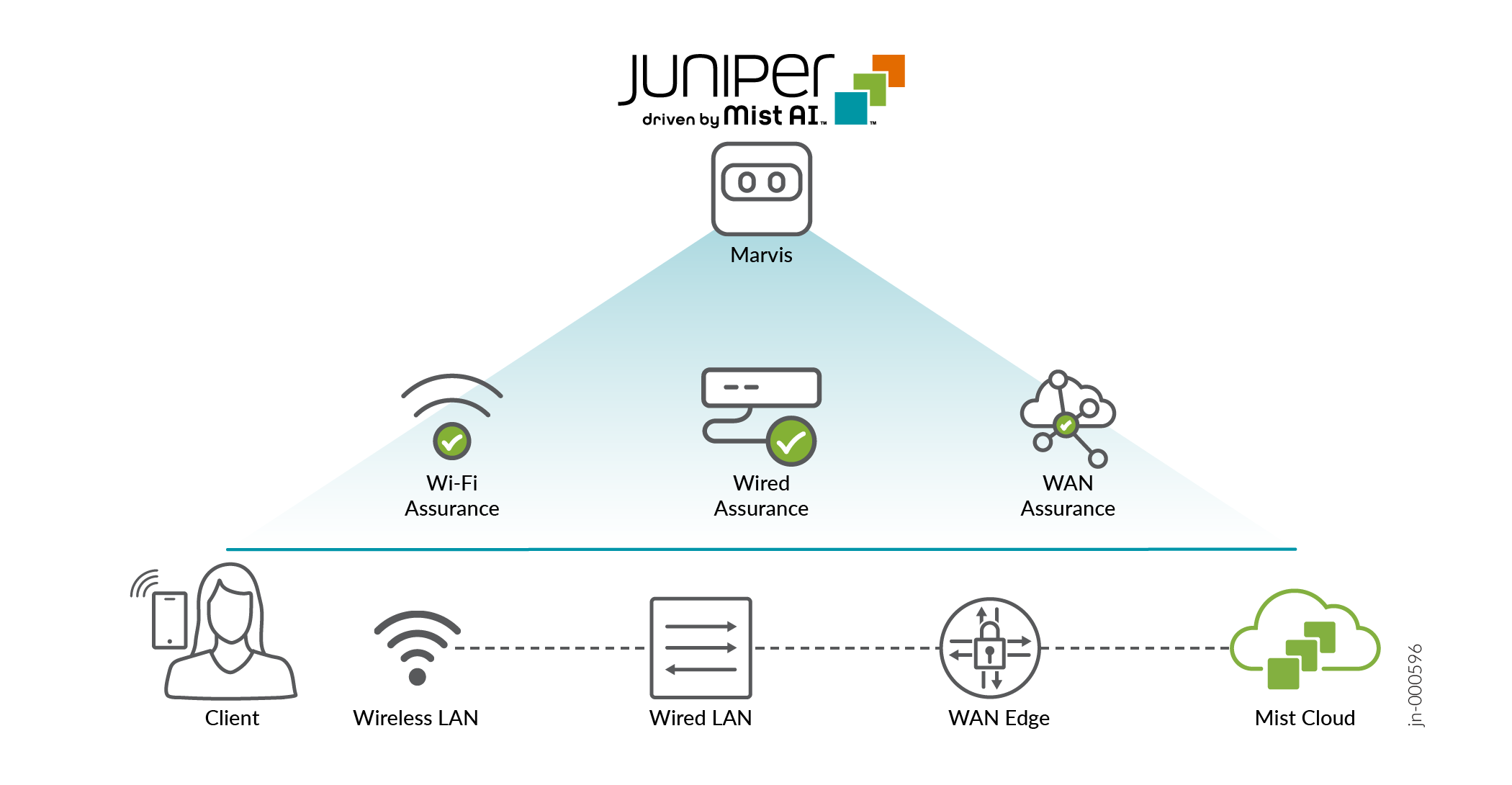
站点间连接 (SD-WAN)
与 Mist AI™ 驱动的瞻博网络® SD-WAN 集成后,您的 WAN 边缘将实现转型。借助瞻博网络 Mist WAN 保证,您的 WAN 边缘设备将变得快速、安全且具有应用感知能力。来自远程站点的软件定义 WAN 流量通过价格较为低廉的宽带服务提供商的抽象叠加传输。这种连接设计取代了昂贵的传统 MPLS 解决方案。边缘设备可以跨各种连接类型(包括 MPLS、宽带、卫星和 LTE)提供有状态故障转移。用户难以察觉到关键应用的这种实时切换。瞻博网络 Mist WAN 保证还可以通过针对运行状况、隧道活动、连接性和活动会话的有针对性洞察,为您的 WAN 边缘提供可见性。通过创建这种软件定义空间,您可以更好地控制访问和安全性,从而影响应用级别的流量。
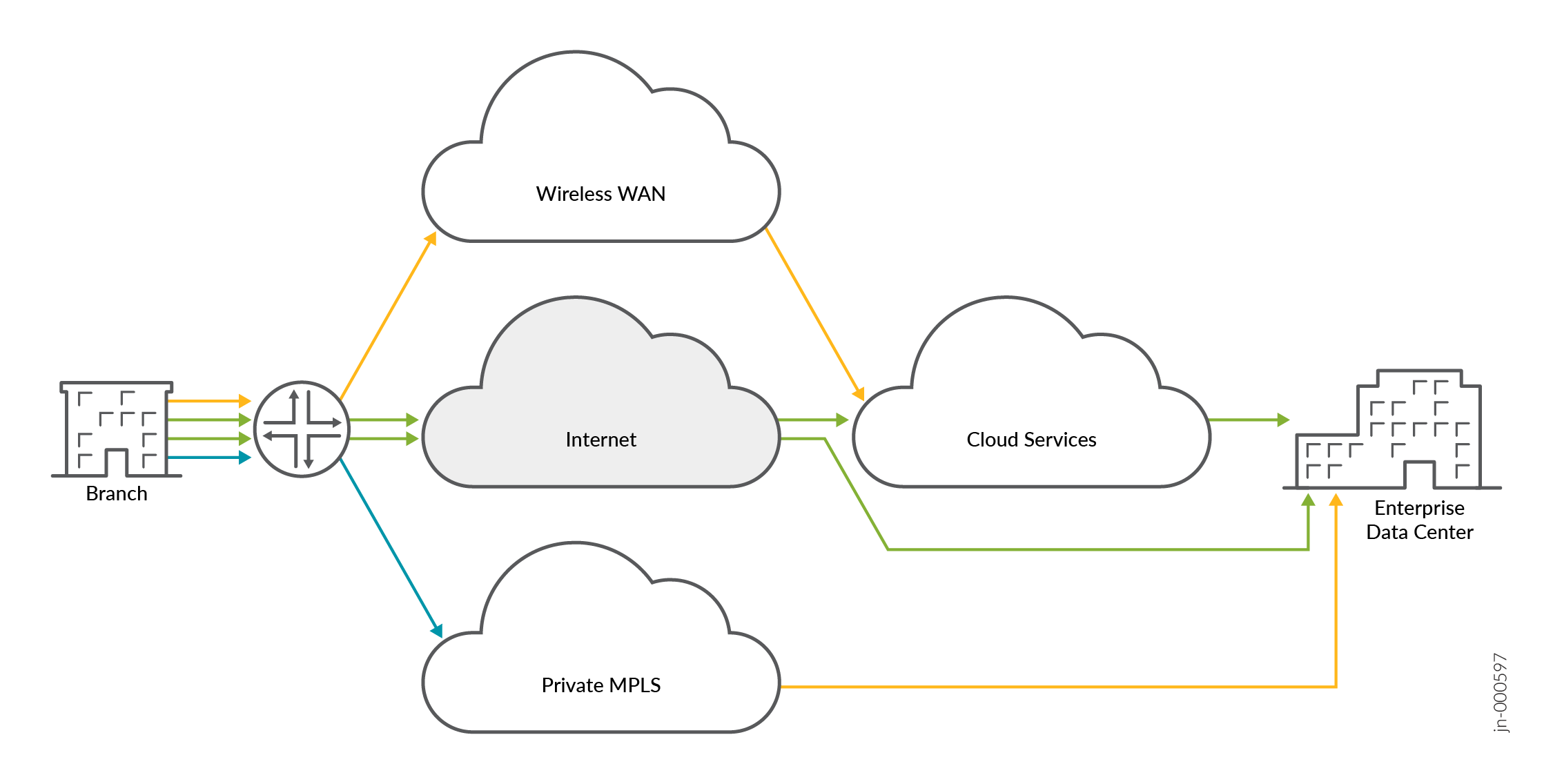
瞻博网络 Mist WAN 保证服务级别预期 (SLE)
Mist 的预测分析和关联引擎 (PACE) 提供数据科学和机器学习来了解最终用户体验。WAN SLE 指标包括:WAN 边缘运行状况、WAN 链路运行状况和应用运行状况。瞻博网络 Mist WAN 保证可以确定影响用户体验的 WAN 问题的根本原因。服务级别预期可以简化运维,更好地了解最终用户体验,并简化网络监控和故障排除。
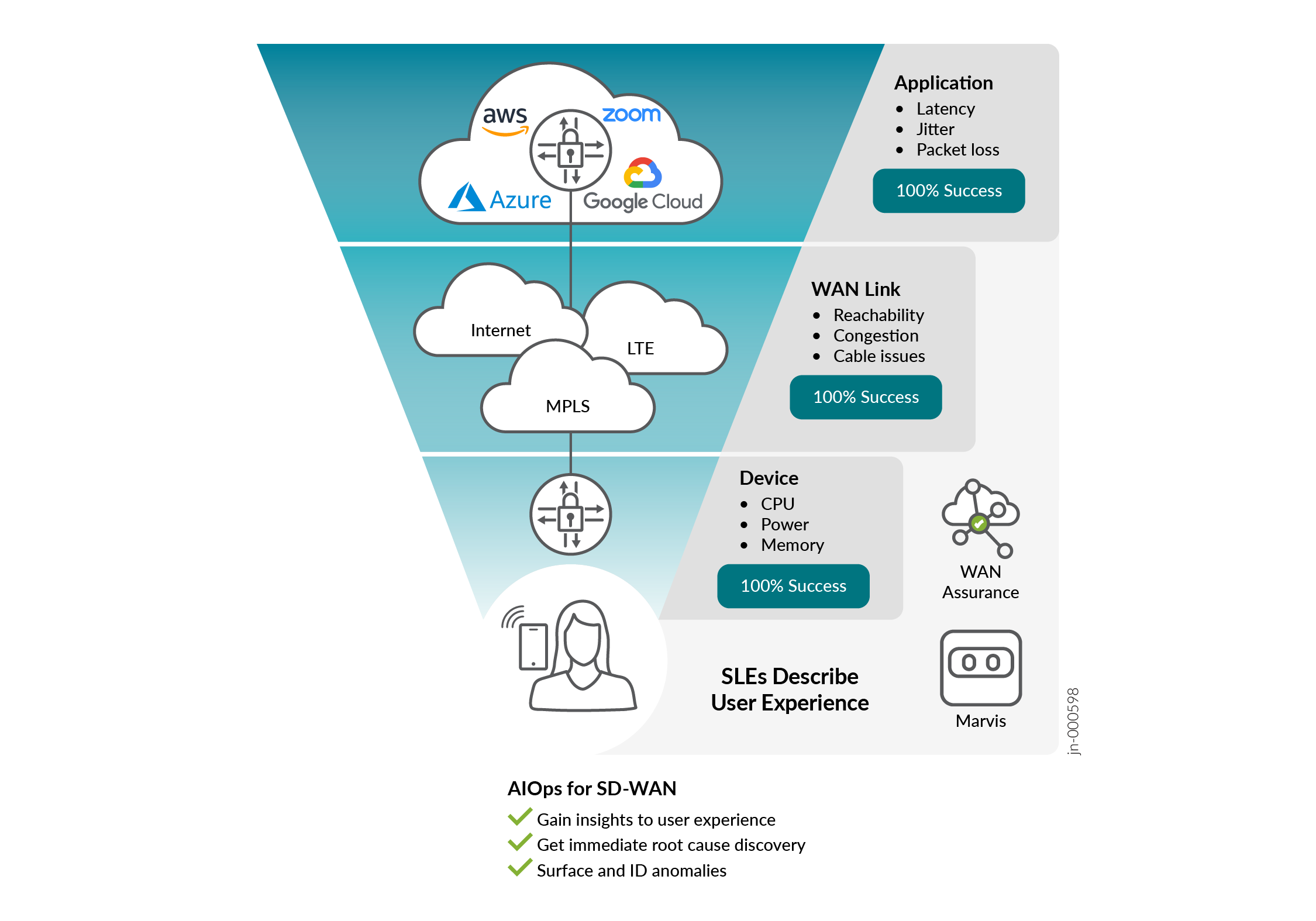
Mist 管理模型
瞻博网络的人工智能驱动型 SD-WAN 解决方案是针对分支机构无线、有线和 SD-WAN 的单一管理平台。瞻博网络 SD-WAN 全自动部署 (ZTP)、生命周期和配置全部通过一个 Mist 仪表板完成。
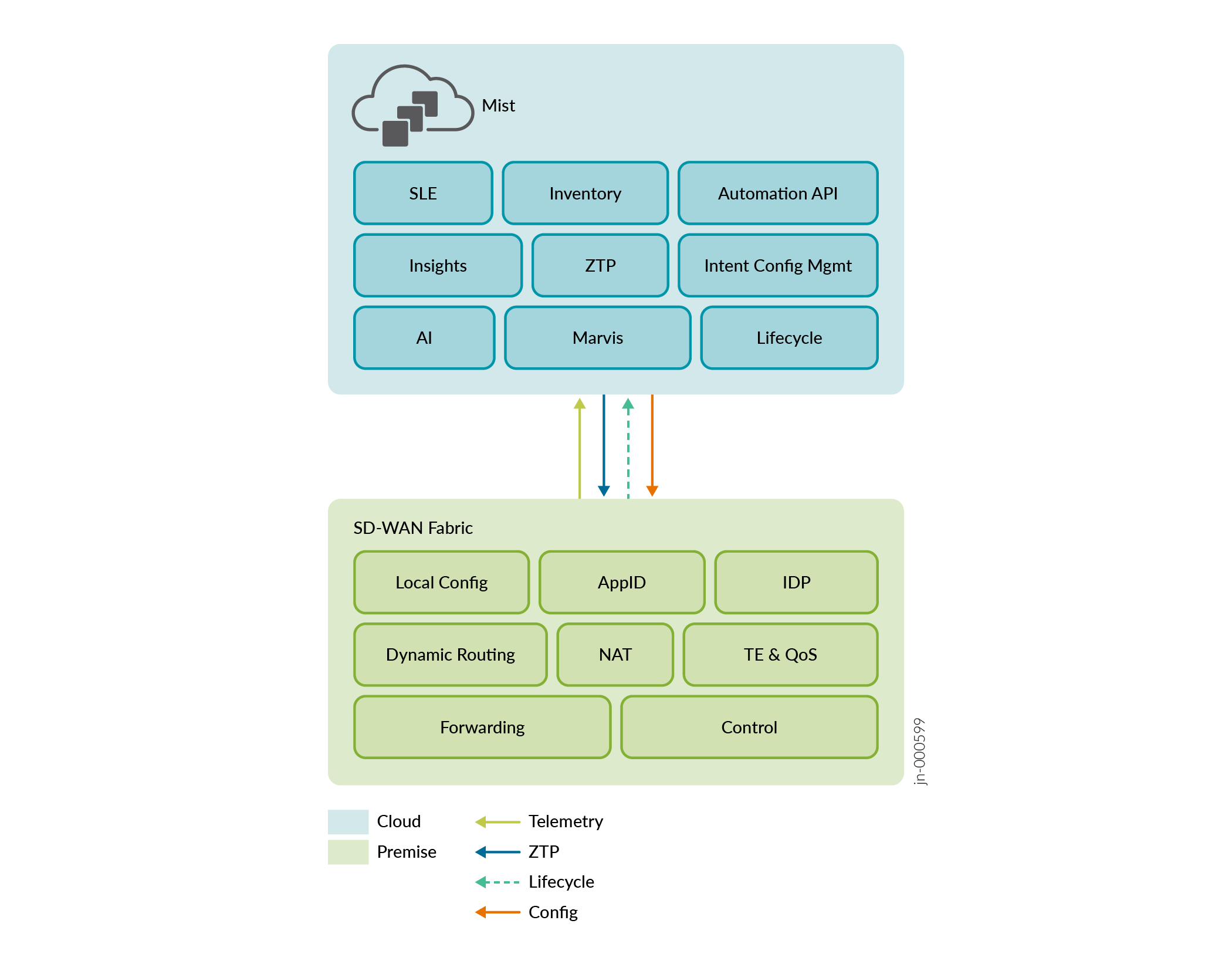
观看以下视频,了解瞻博网络 Mist WAN 保证功能概况。
Juniper MIST WAN Assurance delivers insights and troubleshooting driven by MIST AI into the WAN, exposing many factors that impact user experience across your distributed enterprise. WAN Assurance complements your SD-WAN deployment and is focused on delivering the best user experience, from client to the cloud. SD-WAN solutions dynamically optimize traffic flows across the WAN based on an SLA policy for your applications.
However, these SLAs are set once at the beginning and don't account for changes over time that impact the WAN, rendering these static SLAs ineffective. In contrast, WAN Assurance is centered around the concept of the user minute, which is represented by Service Level Expectations, or SLE for short. If a user is experiencing a poor Microsoft Teams call, then the user is having bad user minutes.
Let's see what this looks like in a Juniper Cloud instance. From the monitor view, we select WAN, choosing from the time frame over the last seven days, and we see three SLEs for the WAN. The first one is Gateway Health, which accounts for the overall state of the SRX WAN edge device itself.
We track CPU, memory, temperature, fan, and power, all of which account for the overall device health. WAN Link Health represents the overall state of the WAN connections to the device. It tracks IPsec status, routing, and the WAN interfaces.
Thirdly, there's App Experience, which accounts for factors that impact application performance based on traffic. This SLE tracks latency, jitter, packet loss, and round-trip time. Together, these three SLEs describe how WAN performance is impacting overall user experience.
Let's ask Marvis what's happening with Microsoft Teams. By simply typing, obvious Teams call is bad, Marvis begins a root cause analysis. Marvis first responds by listing five Teams sessions from the past 24 hours.
We select the troublesome session from the list. Marvis quickly responds that the bad Teams experience was due to high latency on the Gateway SRX. Marvis also shows where the issue is in a simplified network diagram.
It displays how Abhi's MacBook is connected wirelessly to an access point, which in turn is connected to an EX access switch, and finally, the traffic is sent to the WAN via the SRX gateway. Marvis visually shows how each of these points in the network are impacting user experience. We see the AP and the gateway devices may be impacting experience.
We click the AP first. There is some non-WiFi interference in the 5GIG band that could be impacting users. Next, we select the gateway device.
We see it has high latency in one of its WAN links due to slow response from the application server. Marvis makes it that easy to determine root cause analysis of issues impacting user experience. By correlating across Wi-Fi, wired, and WAN, we are able to drive a better user experience within our sites, out of our sites, from client to cloud.
